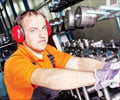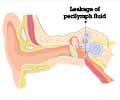A researcher at a national hearing conference will present data that predict 17 percent of people exposed to deployed airbags in American cars will suffer from permanent hearing loss.
A researcher at a national hearing conference will present data that predict 17 percent of people exposed to deployed airbags in American cars will suffer from permanent hearing loss. His data also show, contrary to what experts have previously thought, airbag deployment is more hazardous to the ear when a car’s windows are rolled down.
These are among the results that will be presented by auditory physiologist Dr. G. Richard Price at the National Hearing Conservation Association’s 32nd annual hearing conference.Price, who is a consultant at Auditory Hazard Analysis in Charlestown, Md., will focus his invited presentation on the hidden auditory danger posed by everyday “impulse” noises. An impulse noise is a brief burst of sound like a shotgun blast, as opposed to a continuous noise like the droning of a washing machine. Price said in addition to the well-known dangers of impulse noises like gunfire, minor events like a hammer hitting a nail or even the sound of a baby’s rattle can produce hearing loss.
“The good news is almost all of this hearing loss is preventable,” Price said.
“Wearing hearing protection, designing equipment better, and being aware of the problem can all contribute to preservation of hearing, our very precious resource.”
In Price’s study of car airbag deployment, he sought to determine whether the auditory danger was greatest in cars with the windows down or the windows up. Previously, experts thought rolled-up windows were more dangerous because they allow for higher pressure to be created inside the cabin.
The research concludes, counterintuitively, that having car windows rolled up when airbags are deployed is actually less hazardous to the ear than rolled-down windows. This is because the higher pressure generated in the closed cabin actually prevents greater damage to the ear. The pressure causes a displacement in the middle ear that stiffens the stapes, a small bone outside the inner ear. This stiffening limits the transmission of energy to the inner ear, where hearing damage takes place. In airbag experiments where the cabin is completely sealed and pressure is even higher, hearing damage is reduced even further.
Advertisement
The analysis was done using the Auditory Hazard Assessment Algorithm for the Human (AHAAH) model, which utilizes anatomical components of the ear’s structure to predict hearing loss due to exposure to intense sounds above 130 dB. It has been shown to predict hearing loss accurately in 95 percent of the cases in which human ears have been exposed.
Advertisement
“We often consider only the benefits of safety technology, rather than the unfortunate potential side effects,” Fligor said. “This type of study highlights how common everyday occurrences present a very real hazard to our hearing.”
Source-Newswise











